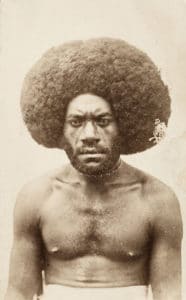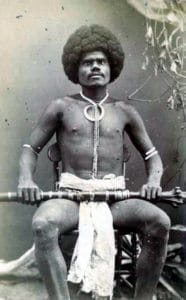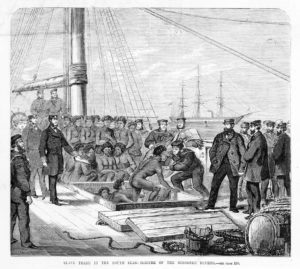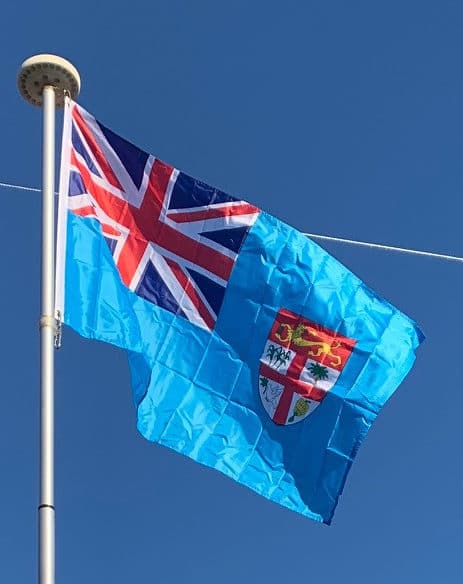
With the demand for land high, the white planters started to push into the hilly interior of Viti Levu, the largest island in the archipelago. This put them into direct confrontation with the Kai Colo, which was a general term to describe the various Fijian clans resident to these inland districts. Cakobau and his allies led forces against the residents of the inland areas and subdued them.
Kingdom of Fiji (1871–1874):
After the collapse of the confederacy foreign powers such as the United States were considering the possibility of annexing Fiji. This situation was not appealing to many settlers, almost all of whom were British subjects from Australia. Britain, however, still refused to annex the country and subsequently a compromise was needed.
In June 1871, George Austin Woods, an ex-lieutenant of the Royal Navy, managed to influence Cakobau and organize a group of like-minded settlers and chiefs into forming a governing administration. Cakobau was declared the monarch (Tui Viti) and the Kingdom of Fiji was established. Most Fijian chiefs agreed to participate.

With the rapid increase in white settlers into the country, the desire for land acquisition also intensified. Once again, conflict with the Kai Colo in the interior of Viti Levu ensued. Settlers formed paramilitary units that frequently engaged in conflict with interior native peoples resulting in the deaths of many local people. By late 1873 the interior peoples were soundly defeated.
Blackbirding and Slavery in Fiji:
The blackbirding era began in Fiji in 1865 when the first New Hebridean and Solomon Island laborers were transported there to work on cotton plantations. On 5 July 1865 Ben Pease received the first licence to provide 40 laborers from the New Hebrides to Fiji.

The British and Queensland governments tried to regulate this recruiting and transport of labour. Melanesian laborers were to be recruited for a term of three years, paid three pounds per year, issued with basic clothing and given access to the company store for supplies. Most Melanesians were recruited by deceit, usually being enticed aboard ships with gifts, and then locked up. The living and working conditions for them in Fiji were worse than those suffered by the later Indian indentured laborers. In 1875, the chief medical officer in Fiji, Sir William MacGregor, listed a mortality rate of 540 out of every 1000 laborers. After the expiry of the three-year contract, the government required captains to transport the laborers back to their villages, but most ship captains dropped them off at the first island they sighted off the Fiji waters. The British sent warships to enforce the law (Pacific Islanders’ Protection Act of 1872) but only a small proportion of the culprits were prosecuted.
Colonization:
Despite achieving military victories over the Kai Colo, the Cakobau government was faced with problems of legitimacy and economic viability. Indigenous Fijians and white settlers refused to pay taxes and the cotton price had collapsed. With these major issues in mind, John Bates Thurston approached the British government, at Cakobau’s request, with another offer to cede the islands. The newly elected Tory British government under Benjamin Disraeli encouraged expansion of the empire and was therefore much more sympathetic to annexing Fiji than it had been previously. Two British commissioners were sent to Fiji to investigate the possibility of an annexation.
